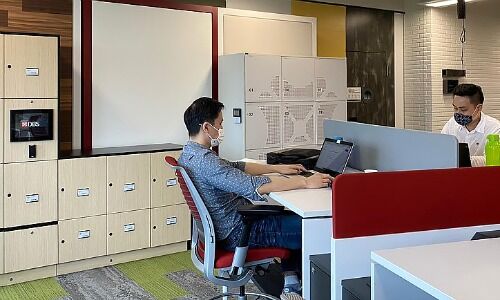DBS to Make Hybrid Work Arrangements Permanent
The bank, which has a workforce of 29,000, said these measures are the result of insights gathered from research, deep-dive experiments and employee surveys conducted by a task force on the future of work, which it convened six months ago.
DBS is transforming the way its employees will work in a post-Covid 19 world, with a number of initiatives that include implementing a permanent hybrid work model that gives employees the option to work remotely up to 40 percent of the time, flexible work arrangements, deploying more project-specific data-driven squads with members from different functions, and creating workspaces that facilitate collaboration, the bank announced on Tuesday.
The bank will also accelerate employee upskilling, with 7,200 employees, of which 4,300 are in Singapore, to undergo training emerging areas such as design thinking, data and analytics, artificial intelligence, machine learning and agile practices.
The announcement follows UOB, which said last week that it would give the majority of its 26,000-strong workforce the choice to work remotely two days a week once COVID-19 restrictions are lifted. Standard Chartered is also rolling out similar measures globally.
Future-Ready
DBS said that over 80 percent of its employees indicated a preference for more open collaboration spaces to facilitate informal discussions and cross-team ideation, which they found difficult to do remotely. As such, the bank will transform its workspaces to enable greater collaboration and ideation, and launch a 5,000-square foot «Living Lab» that aims to blend the best of physical and virtual work space configurations.
«As the way we live, bank and work continue to change dramatically, we must address the magnitude of the disruptions before us,» Piyush Gupta, DBS CEO, said about the changes.
Last week, DBS unveiled its new branch at Takashimaya, which aims to cater to customers who want quicker, socially distanced and more personalized branch services, and said it would roll out similar branches across at least one-third of its branch network over the next 12 to 18 months.



























